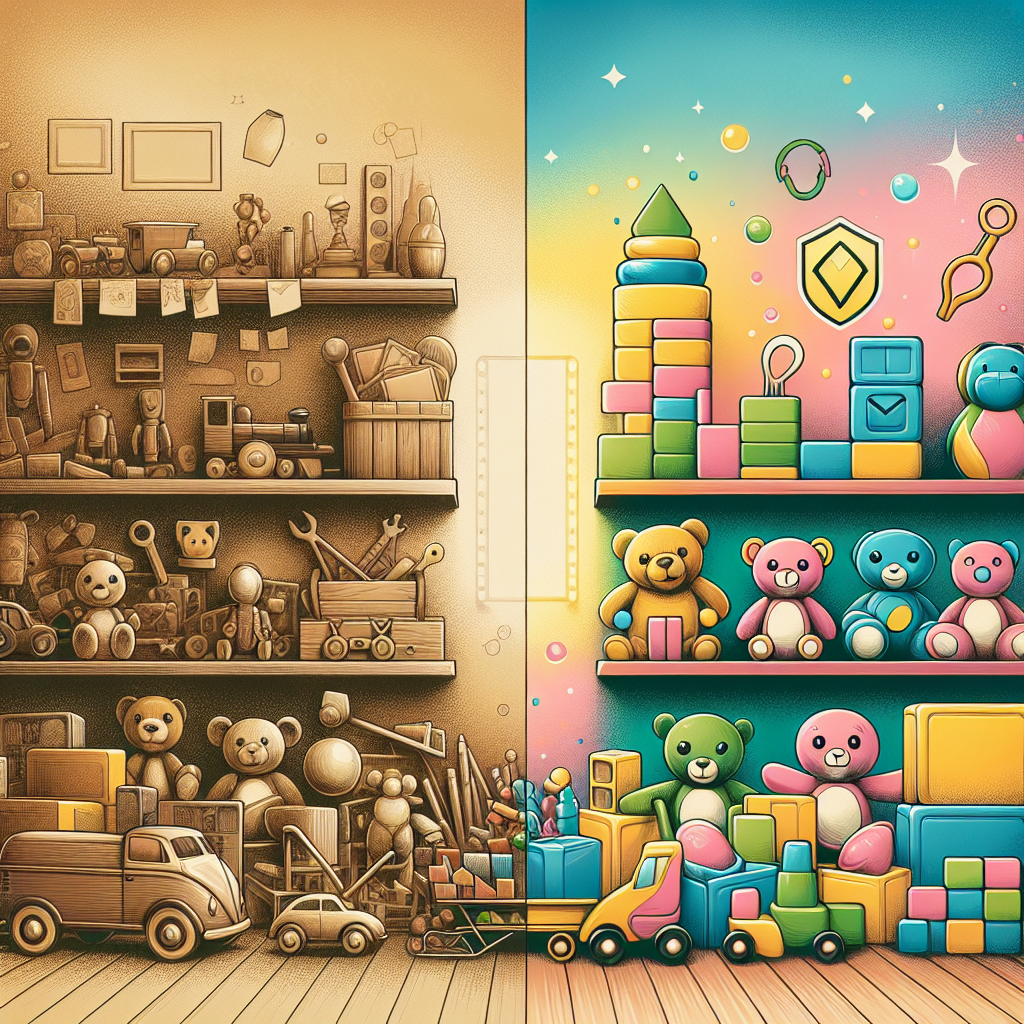The Evolution of Toy Safety Standards: Protecting Our Children One Regulation at a Time
As parents, guardians, and caregivers, the safety of our children is paramount. When it comes to toys, ensuring they are safe, non-toxic, and age-appropriate is crucial. But have you ever wondered how toy safety standards have evolved over the years? 🧸 This blog post delves into the fascinating journey of toy safety standards, highlighting the milestones that have shaped the industry. So, let’s unwrap this topic with a touch of nostalgia and a focus on safety!
Table of Contents
1. Introduction
2. The Early Days of Toy Safety
3. Modern Toy Safety Standards
4. A Global Perspective on Toy Safety
5. Challenges in Implementing Toy Safety Standards
6. The Future of Toy Safety
7. Conclusion
8. FAQs
Introduction
Once upon a time, toys were simple, often handmade, and crafted from natural materials like wood and fabric. Fast forward to today, and the toy industry is a multi-billion dollar sector, producing high-tech gadgets, intricate puzzles, and interactive dolls. With this evolution, ensuring the safety of these toys has become increasingly complex. Let’s take a closer look at how toy safety standards have developed over the years.
The Early Days of Toy Safety
Back in the early 20th century, toy safety was not a primary concern for manufacturers or regulators. Toys were often produced with little consideration for harmful materials, small parts, or sharp edges. It wasn’t until the mid-1900s that incidents involving toy-related injuries and accidents highlighted the need for regulatory oversight.
One of the first significant steps towards toy safety was the formation of the Consumer Product Safety Commission (CPSC) in 1972. This agency was tasked with overseeing the safety of consumer products, including toys. The CPSC introduced guidelines that required toys to be tested for safety hazards, leading to the recall of numerous unsafe products.
Modern Toy Safety Standards
Today, toy safety standards are more comprehensive and rigorous than ever before. Organizations like the American Society for Testing and Materials (ASTM) and the International Organization for Standardization (ISO) have developed detailed guidelines to ensure toys are safe for children of all ages.
These standards cover various aspects, including:
1. Material Safety: Ensuring that toys are made from non-toxic materials.
2. Mechanical and Physical Properties: Verifying that toys don’t have sharp edges or small parts that could pose choking hazards.
3. Flammability: Reducing the risk of toys catching fire.
4. Electrical Safety: Ensuring battery-operated toys don’t pose risks of electric shock.
The focus is not only on preventing injuries but also on promoting educational and mentally stimulating play experiences for children.
A Global Perspective on Toy Safety
Toy safety is a global concern, with different countries establishing their own standards and regulations. For instance, in the European Union, the Toy Safety Directive ensures toys sold within the EU meet stringent safety requirements. Similarly, countries like Canada, Australia, and Japan have their own sets of guidelines, often aligning with international standards to facilitate global trade.
The harmonization of these standards is crucial for manufacturers who export toys worldwide, ensuring a consistent level of safety regardless of where the toys are sold.
Challenges in Implementing Toy Safety Standards
Despite the advancements in toy safety, challenges remain. The constant innovation in toy design and technology means standards must evolve continually. Additionally, the rise of e-commerce has made it easier for counterfeit and non-compliant toys to enter the market, posing significant risks to consumers.
Manufacturers must stay vigilant, conducting rigorous testing and quality control checks to maintain compliance. Meanwhile, regulatory bodies must enhance their monitoring capabilities to catch violations swiftly.
The Future of Toy Safety
Looking ahead, the future of toy safety will likely involve even more sophisticated testing methods and technological advancements. With the increasing popularity of smart toys and augmented reality, standards will need to address data privacy and cybersecurity concerns alongside traditional safety issues.
Moreover, as sustainability becomes a greater focus, toy safety standards will also need to encompass environmental considerations, promoting eco-friendly materials and manufacturing processes.
Conclusion
The evolution of toy safety standards reflects our growing understanding of child safety and the complexities of modern toys. Continuous improvement and collaboration between manufacturers, regulators, and parents are essential to ensure that children can enjoy their playtime safely. As we look to the future, embracing new technologies and sustainability will be key to maintaining and enhancing toy safety standards. 🎲
FAQs
Q1: What should I look for when buying toys to ensure they are safe?
A: Always check for age-appropriate labels, look for safety certifications like ASTM or CE marks, and ensure the toy is made from non-toxic materials.
Q2: How can I report an unsafe toy?
A: You can report unsafe toys to consumer protection agencies like the CPSC in the USA or similar organizations in your country. Many have online reporting tools for convenience.
Q3: Are there specific toys that are considered universally unsafe?
A: Toys with small parts are generally considered unsafe for children under three due to choking hazards. Additionally, toys with sharp edges or those made from toxic materials are universally deemed unsafe.
By staying informed and vigilant, we can ensure that our children enjoy safe and enriching play experiences. 🧩
